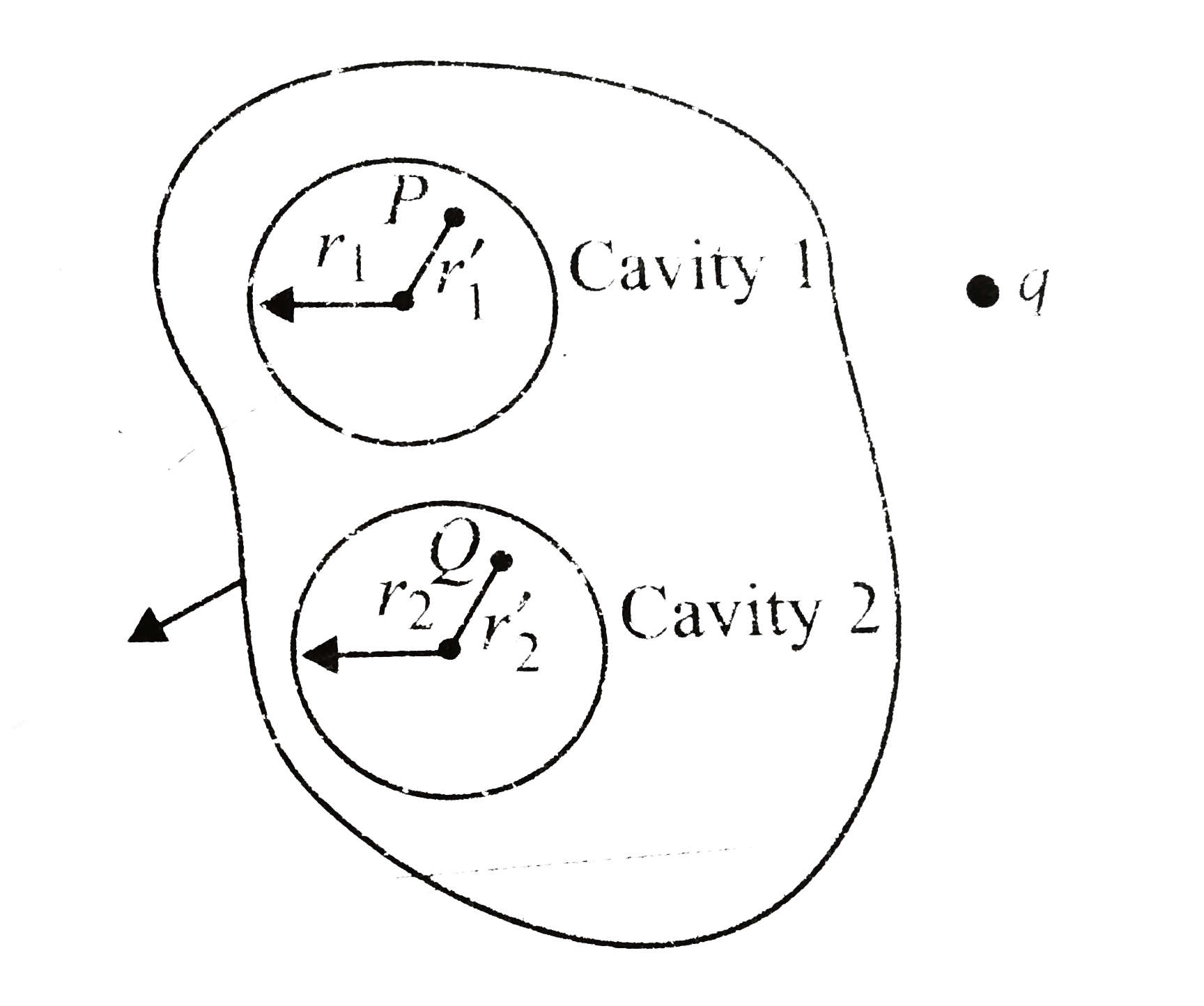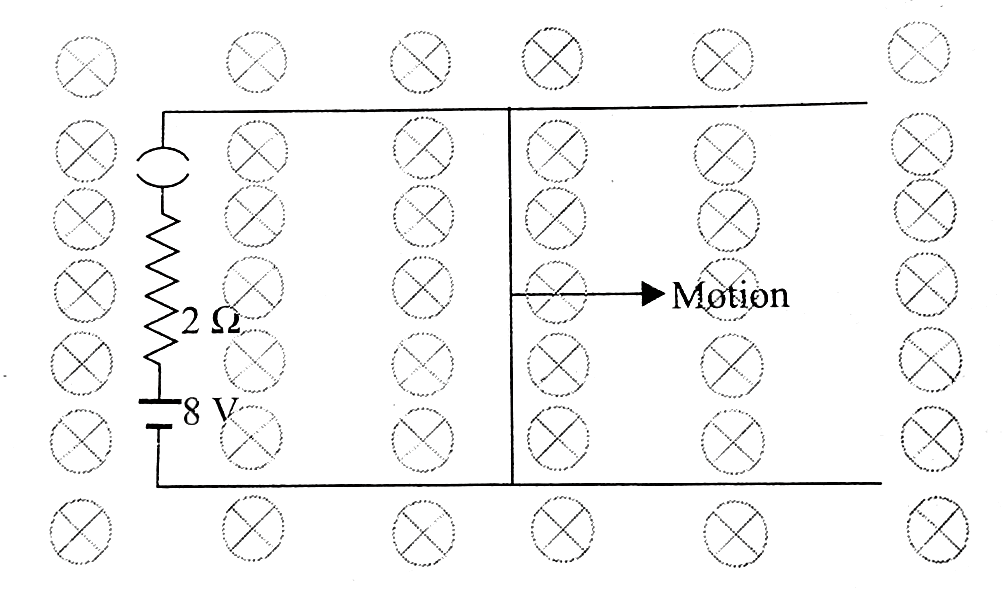Just outside a sharp point on a conductor we will have a larger than just outside gradually curving places on the conductor.
A. Electric field
B. Voltage
C. Both(1) & (2)
D. Neither (1) & (2)
To solve the question, we need to understand the behavior of electric fields around conductors, particularly focusing on sharp points versus gradually curving areas.
1. Understanding Electric Field Behavior:
- The electric field around a conductor is influenced by its shape. At sharp points, the curvature is very small, which leads to a higher concentration of electric field lines.
2. Electric Field Formula:
- The electric field E at a point near a charged conductor can be calculated using the formula:
E=Q4πϵ0r2
- Here, Q is the charge, ϵ0 is the permittivity of free space, and r is the radius of curvature.
3. Comparing Sharp Points and Gradual Curves:
- For a sharp point on a conductor, the radius of curvature r is very small, leading to a large electric field E.
- For gradually curving areas, the radius of curvature R is larger, resulting in a smaller electric field E′:
E′=Q4πϵ0R2
- Since R>r, it follows that E′<E.
4. Conclusion:
- Therefore, just outside a sharp point on a conductor, we will have a larger electric field than just outside gradually curving places on the conductor.
Final Answer:
Just outside a sharp point on a conductor, we will have a larger electric field than just outside gradually curving places on the conductor.
---
- The electric field around a conductor is influenced by its shape. At sharp points, the curvature is very small, which leads to a higher concentration of electric field lines.
- The electric field E at a point near a charged conductor can be calculated using the formula:
E=Q4πϵ0r2
- Here, Q is the charge, ϵ0 is the permittivity of free space, and r is the radius of curvature.
- For a sharp point on a conductor, the radius of curvature r is very small, leading to a large electric field E.
- For gradually curving areas, the radius of curvature R is larger, resulting in a smaller electric field E′:
E′=Q4πϵ0R2
- Since R>r, it follows that E′<E.
- Therefore, just outside a sharp point on a conductor, we will have a larger electric field than just outside gradually curving places on the conductor.
Just outside a sharp point on a conductor, we will have a larger electric field than just outside gradually curving places on the conductor.
Topper's Solved these Questions
- BOOK - AAKASH INSTITUTE ENGLISHCHAPTER - ELECTROSTATIC POTENTIAL AND CAPACITANCE EXERCISE - ASSIGNMENT (SECTION-A) Objective Type Questions (Only one answer)53videos
ELECTROSTATIC POTENTIAL AND CAPACITANCE
- BOOK - AAKASH INSTITUTE ENGLISHCHAPTER - ELECTROSTATIC POTENTIAL AND CAPACITANCE EXERCISE - SECTION-B (OBJECTIVE TYPE QUESTIONS (ONLY ONE ANSWER) )1videos
ELECTROSTATIC POTENTIAL AND CAPACITANCE
- BOOK - AAKASH INSTITUTE ENGLISHCHAPTER - ELECTROMAGNETIC WAVESEXERCISE - ASSIGNMENT SECTION - D Assertion-Reason Type Questions25videos
ELECTROMAGNETIC WAVES
- BOOK - AAKASH INSTITUTE ENGLISHCHAPTER - GRAVITATION EXERCISE - ASSIGNMENT SECTION - D (ASSERTION-REASON TYPE QUESTIONS)15videos
GRAVITATION
Similar Questions
A current i ampere flows along the inner conductor of a coaxial cable and returns along the outer conductor fo the cable, then the magnetic induction at any point outside the conductor at a distance r metre from the axis is
View SolutionA point charge q1 is placed inside cavity 1 and another point charge q2 is inside cavity 2. A point charge q is placed outside the conductor. For the situation described above, answer the following questions.

The charge on outer surface of the conductor would beView Solution
Knowledge Check
- Question 1 - Select One
If a conductor has a potential V≠0 and there are no charges anywhere else outside, then
Athere must be charges on the surface or inside itself.Bthere cannot be any charge in the body of the conductor.Cthere must be charges only on the surface.Dboth (a) and (b) are correct.
A point charge Q is situated (outside) at a distance r from the centre of an uncharged conducting solid sphere of radius R. The potential due to induced charges (on the conductor) at a point B inside the conductor whose distance form the point charge is d is ______
View SolutionIf net flux through a Caussian surface is zero, then find whether the following statements are correct or not.
The electric field just outside a charged conductor is perpendicular to the surface of the conductor and has a magnitude of σ/2ε0 where σ is the charge per unit area at that point.View SolutionFigure shows a conducting frame having battery and a resistance on which a movable conductor of length 0.5 m can slide, The whole arrangement is placed in a uniform magnetic field of B =0.4 T directed perpendicular and into the plane of frame. Initially the circuit is open. When the key is inserted, the conductor begins to move. It is found that a force 0.5 N has to be applied on the conductor to the left to keep it moving at constant speed to the right.
Current flowing in the conductor is:
 View Solution
View Solutionwhat is presnet just outside the vascular cambium
View SolutionA point charge Q is placed outside a hollow spherical conductor of radius R , at a distance r(r>R) from its centre C . The field at C due to the induced charges on the conductor is
View SolutionIf a conductor has a potential V≠0 and there are no charges anywhere else outside, then
View SolutionA point charge q1 is placed inside cavity 1 and another point charge q2 is inside cavity 2. A point charge q is placed outside the conductor. For the situation described above, answer the following questions.
→E inside the conductor at point S distant r from point charge q, due to charge on outer surface of the conductor, would beView Solution

